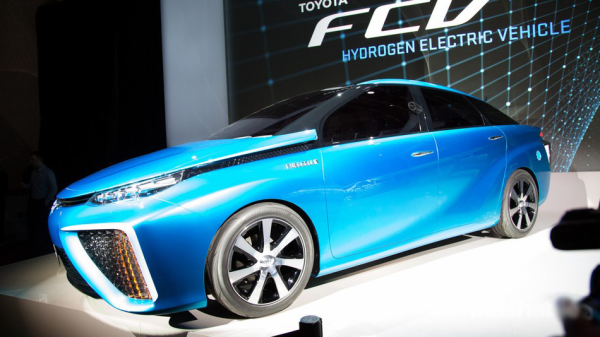The environmentally friendly vehicles of the future
As coal and other fossil fuels continue to deplete and the global consciousness regarding pollution and climate change grow, the simple fact is that vehicles will not be able to run off petroleum forever.
Eventually, one day, the resources we’ve used for years will run out and their impact on the earth will be too great to ignore (they’re essentially at that point now, anyway). That means that vehicles will need to be embrace safer, renewable energies or find alternatives that at least minimise the impact we have by reducing or eliminating our carbon footprint.
While heavier vehicles such as freight trucks may still be a little way from investing in cleaner energies due to sheer power needed to move one (although most do use diesel, which is a far cleaner option than unleaded petroleum), lighter vehicles such as the family car are now changing thanks to a range of options that go beyond unleaded or LPG.

Hybrid
The hybrid car, which was popularised here in Australia thanks to Toyota, is undoubtedly one of the most popular, more environmentally conscious choices around. As the name suggests a hybrid vehicle is typically a hybrid between a petrol and electric car. In lower power situations (such as lower speeds or going down hills) the electric battery will take over. More labour intensive moments will be handled by the petrol tank, which then allows the battery to recharge in the interim.
While hybrid cars are not 100% environmentally, the best are substantially more eco-friendly than almost any purely petrol-based vehicle. For those hybrids that are powered by electricity and diesel, they tend to be both the most environmentally friendly and longest range of the hybrid options out there.
Electric
Electric cars can either be next to zero emission or can still create a similar carbon footprint to that of a petrol car, depending on one main factor. The key issue that exists with ensuring an electric vehicle purchase is truly dropping your carbon footprint is whether or not your home has a minimised carbon footprint. As the majority of electricity in Australia is provided via coal-based power, the amount of time you spend charging your electric car (usually between 6 to 8 hours) will actually be equal to the emissions you create driving around a petrol car.
However, if a large portion of your home’s electricity is being generated by lower emission technologies such as solar power, then the emissions will be much lower. This is because charging your car won’t create as many emissions thanks to cleanliness of solar. Then, when you’re driving around the city, you’ll be creating zero tailpipe emissions.
As they’re in their early stages, there are both pros and cons to electric cars. One key positive (besides zero tailpipe emissions) is that electric cars do not require petrol, meaning you’ll never have to pay for ridiculous petrol costs again (even the cost of charging your car at home won’t cost anywhere near as much). A con, however, is that the range electric cars is fairly limited. While most of them will be able to handle a typical daily commute without any issue, longer trips are mostly out of the question, unless there are charging stations along the way. But as electric cars aren’t as ubiquitous as petrol cars, charging stations are sparse – especially in Australia.
Still electric cars are in their infancy, and as the technology improves, so will the range and number of charging stations. And, in a similar fashion, charging times will certainly decrease as these vehicles become better optimised.
Fuel cell vehicles
Fuel cell vehicles are easily the least common of the new environmentally friendly vehicles out there. While hybrids and electric cars will begin to mature in the future, fuel cell vehicles are comparatively young. Essentially, fuel cell vehicles are powered by a mix of air and hydrogen, which then create electricity that powers the. It’s still somewhat experimental, but it is possible. Toyota hopes to have its first fuel cell vehicle commercially released by 2015.
In a similar manner to the currently young technology of electric cars, there are barriers to the success of fuel cell vehicles. Depending on the make, some will still require their own fuelling stations. Toyota’s concept fuel cell vehicle will be able to run for about 500km on one “tank”. So the range is better than electric, and emissions are zero besides water vapour, but the overall success of fuel cell vehicles will depend on the affordability of the tech, the support for it (much like the need for charging stations with electric cars) and constant refinements.